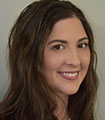Laser hair removal has grown in popularity over the last several years. LASER is an acronym for light amplification by the stimulated emission of radiation. This type of hair removal was not always an option for higher Fitzpatrick types due to the melanin in the skin. To understand how to safely perform laser, professionals must first understand how laser works. Laser treatments offer permanent hair reduction and, due to updated equipment and technology, now this treatment is available to nearly anyone.
A BRIEF OVERVIEW OF FITZPATRICK SKIN TYPES
Type I is white and very fair – they have a tendency to always burn and never tan. Type II is also fair skin; features may be a bit darker than type I, but this skin type still burns easily. Type III is typically cream white skin which sometimes burns but will gradually tan with repeated sun exposure. Type IV is Mediterranean skin which rarely burns and gradually tans. Type V is Middle Eastern skin which tends to be rarely sun sensitive and tans easily. Type VI is black skin which is also rarely sun sensitive and tans well. Understanding Fitzpatrick types for both an aesthetician and a client will be crucial for performing a safe and effective treatment.
HOW LASER WORKS
Laser works by utilizing pulses of light to target the pigment in hair follicles. The light energy is absorbed by areas of high pigment, which is the melanin. Once the light energy makes contact with the hair follicle, it transfers the energy to heat energy. Over time and several treatments, this will damage the follicle and reduce and even prevent the hair growth.
Heavily pigmented skin can affect the laser’s ability to be able to differentiate the melanin in the skin from the melanin in the hair. Melanin in the skin will cause the wavelengths to react before the laser reaches its target. The risk of damage to the skin is far greater when there is not as much contrast with the skin and the hair.
WHICH LASERS TO LOOK FOR
When it comes to safe options for higher Fitzpatrick types, longer wavelengths are the best alternative. A great option is the 1,064 nanometers YAG, which is yttrium aluminum garnet. The YAG is a crystal, specifically a garnet, that is used as a laser medium. It will emit light with a wavelength of 1064 on the infrared spectrum of light. This type of laser has the ability to pick up even the smallest pigment differences that are present between hair and skin. This wavelength is sufficient to achieve significant damage to the dark coarse hairs, while not damaging the epidermal pigment. The YAG allows the energy delivered from the laser to occur over a longer period of time, which in turn gives the skin more time to allow for the heat to dissipate. This will help minimize post-treatment blistering or any pigment changes that may be associated with laser treatments.
WHY COOLING PLATES ARE SO IMPORTANT
When it is time to choose laser equipment, cooling plates should be an important part of the decision. Cooling the skin before, during, and after treatment is crucial for preventing any epidermal damage that may occur, especially on more pigmented skin. Risks of not cooling may include increase in pain, blistering, scarring, and pigmentation. By cooling the skin, this will prevent the epidermis from reaching the temperature beyond the threshold temperature responsible for thermal injury. Cooling plates will help to protect the epidermis, reduce overall discomfort, minimize erythema, and improve the overall efficacy of the treatment.
In every aspect, it is important to do as much research as possible to understand what the options are for any safe and effective treatment. As professionals, it’s our job to thoroughly know and understand Fitzpatrick types. We should alway err on the side of caution when making this determination. Train on the equipment and know how to properly understand the settings of the machine and the science behind what you are doing.
We are fortunate to live in a time where everyone has options to have safe, effective, and comfortable treatments. Research is crucial when finding a safe and knowledgeable place.
 Andrea Gregaydis is a licensed aesthetician and international CIDESCO diplomat. She holds multiple additional licenses as a New York state instructor and nail technician, as well as certified laser technician. Gregaydis is the lead instructor at the Aesthetic Science Institute and has over 10 years of experience as a practitioner, team coordinator, and role model for hundreds of future skin care professionals. She is a contributing author to top industry trade magazines, as well as a speaker at various aesthetics conferences across the United States.
Andrea Gregaydis is a licensed aesthetician and international CIDESCO diplomat. She holds multiple additional licenses as a New York state instructor and nail technician, as well as certified laser technician. Gregaydis is the lead instructor at the Aesthetic Science Institute and has over 10 years of experience as a practitioner, team coordinator, and role model for hundreds of future skin care professionals. She is a contributing author to top industry trade magazines, as well as a speaker at various aesthetics conferences across the United States.